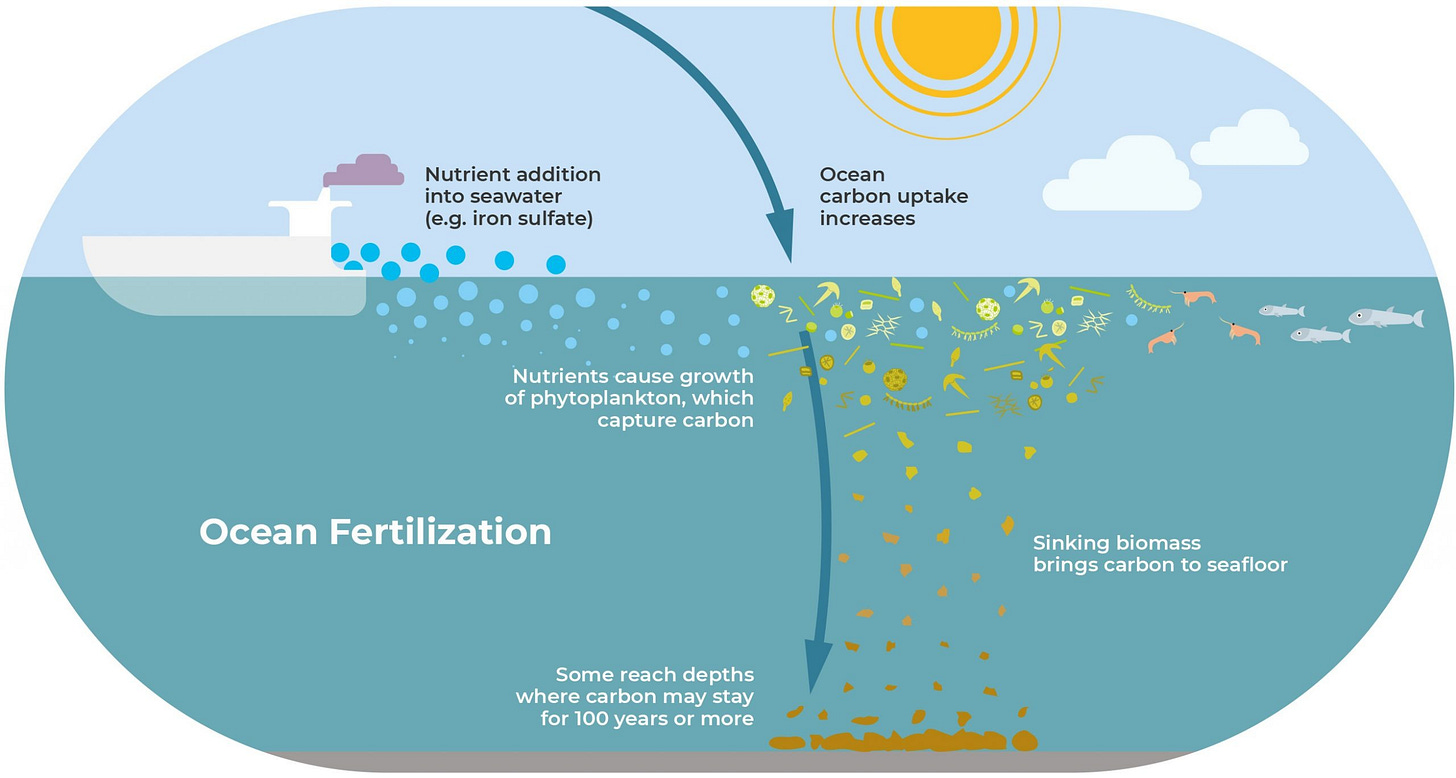The Risks of Iron Fertilization and Geoengineering
Why Grand Geoengineering Schemes May Do More Harm Than Good
The modern climate crisis narrative, driven largely by what I believe to be irrational fear, has led to the normalization of geoengineering, concepts that were once confined to the realm of science fiction. Instead of focusing on practical, incremental, and science-based solutions to environmental issues, much of the world has fixated on catastrophic projections of a future dominated by extreme weather, rising seas, and social collapse. This obsession has opened the door for grandiose, large-scale interventions in Earth’s natural systems, like Solar Radiation Management (SRM) and now, ocean-based iron fertilization.
A recent article in Scientific American, “Scientists Will Engineer the Ocean to Absorb More Carbon Dioxide,” brings to the forefront one of these lesser-known geoengineering proposals, iron fertilization. The proposal involves artificially boosting the ocean's ability to absorb CO2 by stimulating the growth of phytoplankton through iron seeding. Proponents argue that this could be a way to draw down atmospheric CO2, thereby mitigating global warming. However, much like SRM, iron fertilization raises serious concerns about unintended ecological consequences, ethical considerations, and the necessity of such extreme measures in the first place.
Geoengineering Refresher
Geoengineering refers to the deliberate large-scale manipulation of environmental processes in order to counteract the effects of climate change. These proposals are usually divided into two categories:
Solar Radiation Management (SRM): SRM techniques seek to reflect more sunlight away from Earth to cool the planet. This might involve spraying aerosols into the atmosphere to reflect sunlight, creating artificial clouds, or placing reflective surfaces in space. These methods do not reduce CO2 but instead aim to counterbalance its warming effect.
Carbon Dioxide Removal (CDR): CDR focuses on actively removing CO2 from the atmosphere. Iron fertilization, a type of ocean-based geoengineering, falls into this category.
In my previous article on SRM, I laid out the critical flaws in such a strategy, including the unpredictable and potentially catastrophic side effects of artificially altering the atmosphere. Iron fertilization poses similar risks, and these must be critically examined before such measures are embraced.
Iron Fertilization: An Explainer
Iron fertilization is based on the idea that adding iron to certain regions of the ocean could boost phytoplankton growth. Phytoplankton, like plants on land, use photosynthesis to convert CO2 into organic carbon. As these organisms grow and die, the carbon they absorb can theoretically sink to the deep ocean, locking it away from the atmosphere for centuries.
This technique taps into a naturally occurring process. In areas of the ocean known as High-Nutrient, Low-Chlorophyll (HNLC) zones, phytoplankton growth is limited by a lack of iron. By adding iron, proponents claim we can significantly increase CO2 absorption on a global scale. However, this proposal is based on an overly simplistic understanding of ocean ecology and the carbon cycle. The natural balance of ocean systems is delicate, and the introduction of large quantities of iron could lead to unforeseen ecological disruption.
Critical Issues with Iron Fertilization
Keep reading with a 7-day free trial
Subscribe to Irrational Fear to keep reading this post and get 7 days of free access to the full post archives.





